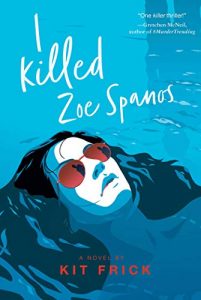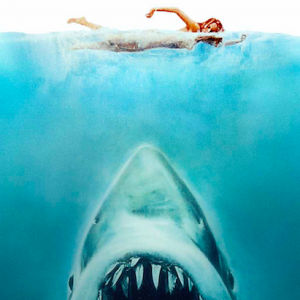The character of the investigative reporter has long featured prominently in the pages of crime fiction, along with her counterparts, the police detective and the lawyer. Laura Lippman, Fiona Barton, Bruce DeSilva, Michael Connelly, and Allison Brennan are just a few of the many contemporary crime writers who have penned novels led by journalists. The reporter protagonist or co-protagonist is a mainstay of mystery and crime fiction, but within this genre staple, a new subset of journalists is rising: the podcasters.
Like so many others, I was drawn hard and fast into the true crime podcast world with 2014’s Serial, and my fascination with investigative podcasts blossomed from there. I’m a dedicated listener, and as an author of suspense fiction, my interest in the podcast format naturally began to intersect with my creative work. It’s hardly surprising that recent contributions to the world of crime, thriller, and mystery fiction—both on the adult and young adult sides—have featured a proliferation of podcast hosts among their characters and excerpts from fictional true crime podcasts as key parts of their stories.
There are likely a few elements at play in the rise of this trend. First, the serial nature of investigative podcasts popularized by Sarah Koenig’s eponymous series lends itself beautifully to the construction of a fictional narrative. Consider the podcast in comparison to today’s other mega-popular true crime format, the TV documentary series. True crime docuseries are often released via the “Netflix model,” and while delivering the entire show at once is appealing to viewers who want to binge-watch, this lump-delivery of content isn’t a natural fit when it comes to interweaving true crime media and narrative fiction. In contrast, with episodes of their fictional podcasts spooling out in increments, authors can utilize the podcast format to carefully parcel out new information.
Another factor is the lower barrier to entry when it comes to character research and development. Many writers whose books feature newspaper reporters and other career journalists came themselves from a background in the field before pivoting to fiction; given the nuances of the profession and a desire to “get it right,” this makes perfect sense. Podcasting is a different animal entirely; while professional podcasts abound, so do those put together by amateurs. This variety has enabled a wider range of authors to effectively and convincingly play in the podcast sandbox.
Finally, there’s the fun factor. The appeal of writing a story-within-a-story is nothing new, and developing a fictional crime podcast allows creators to enter the waters of true crime and audio journalism without ever leaving the pages of fiction.

The wave of crime fiction featuring podcasts kicked off in 2017 with Kathleen Barber’s Are You Sleeping (re-released in paperback and developed for TV as Truth Be Told). The timing is auspicious; Barber was among the first to see the possibilities in the intersection of thrilling fiction and podcasting, and given the realities of publishing timelines, 2017 is just about the earliest we’d expect to see true crime podcasts playing a role in published books. In Truth Be Told, Barber introduces us to Poppy Parnell, an investigative reporter who releases a viral podcast that exposes dark secrets about protagonist Josie’s family and compels her to face a past she thought she’d left behind. “My experience listening to the first season of the Serial podcast largely inspired the plot of Truth Be Told,” Barber says. “I had become so immersed in the narrative aspect of Serial that I forgot it was a real story about real people … I really wanted to replicate that all-consuming (and arguably morally questionable) experience for my readers [through] ‘transcripts’ of the podcast and snippets of social media discussions about it.”
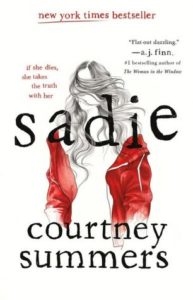
Courtney Summers, author of 2018’s Sadie, was similarly inspired. She says, “Serial was winding up or had just ended when I started writing Sadie. It made me think about the consequences and impact of packaging true crime stories as a form of entertainment, particularly when so many of them feature violence against women and girls. Once I started considering the emotional costs and imagining how that might look from the perspectives of both victim and storyteller, the book sort of built itself around that.” In Sadie, Summers interweaves two storylines: that of Sadie Hunter, a nineteen-year-old runaway on a laser-focused mission to avenge her sister’s killer, and The Girls, an investigative podcast hosted by radio journalist West McCray, who sets out to find the missing Sadie. Summers says, “Sadie is not an indictment against true crime podcasts—I think the most successful of them are successful because they handle the topics they explore with respect and care—but I do hope it asks listeners to consider how they’re engaging with content that has the potential to objectify victims of crime and violence against women. At the heart of these podcasts are real people who usually don’t survive to tell their side of the story—it’s important to keep their humanity at the forefront and never lose sight of it, otherwise we lose a bit of our own.”
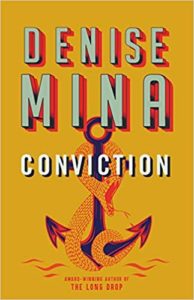
2019 saw the release of Denise Mina’s Conviction, in which protagonist Anna McDonald comes to the shocking realization that she knows the victim of the true crime podcast she’s binging—a discovery that coincides with the implosion of her home life and leads to an impromptu road trip with her best friend’s celebrity husband. Soon, Anna and Fin become amateur podcasters in their own right as they set out to uncover what really happened to Anna’s friend—and try not to dig their own graves. In an interview with Molly Odintz previously published on Crime Reads, Mina says of her obsession with true crime podcasts, “True crime stories are compelling because they matter, have real world consequences, tend to be classed as a low art genre so anyone can enjoy them and have a valid opinion and also because there’s so much good stuff out there!”
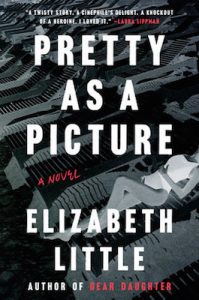
Pretty as a Picture, Elizabeth Little’s 2020 release, also introduces us to a pair of amateur podcasters, precocious pre-teens Grace and Suzy, who bring the novel’s protagonist, film editor Marissa Dahl, into their quest to solve the real-life mystery behind the movie Marissa has been hired to cut. About her process for developing Pretty as a Picture’s witty, often piercing podcast, Little says, “At first what appealed to me about writing the transcripts was the same thing that appeals to me about messing around with screenplays: it’s all dialogue, baby. And that’s always my favorite thing to write, not just because there’s so much opportunity for humor, but also because that’s always how I discover new things about my own characters.”
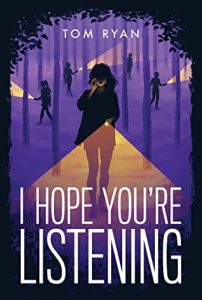
In the near future, we can look forward to more podcast-driven crime fiction. Tom Ryan’s I Hope You’re Listening, set to release in October, follows a hit amateur podcast, in which the host, known to readers as Dee but to her listeners only as “The Seeker,” enlists an eager army of laptop detectives to solve missing persons’ cases—and is drawn inevitably into examining the disappearance of her childhood best friend. While Kathleen Barber and Courtney Summers were both inspired in part by the dark side of the true crime genre—the ways in which podcasts can package real-life tragedies as entertainment and listeners can forget the humanity of their subjects—Ryan was inspired by the positive side of listener engagement. He says, “I became fascinated with the rising popularity of true crime podcasts, especially the ways in which the format uniquely allows people to become intimately invested in the stories being covered. Radio Silent‘s listeners actually respond to each case by doing online sleuthing—with mixed results. Someone Knows Something is a CBC podcast that follows host David Ridgen as he does a deep dive into a different unsolved crime or disappearance in each season. I admire the way that Ridgen navigates the complexities of each case with tact and sensitivity and tried to give Dee’s anonymous host persona—’The Seeker’—a similar soft touch.”
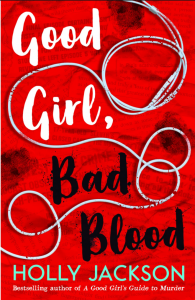
Holly Jackson’s Good Girl, Bad Blood released in April in the UK. While the sequel to her bestselling A Good Girl’s Guide to Murder does not yet have a US release date, an announcement is expected soon. The sequel catches up with teen protagonist Pip after having released a viral true crime podcast documenting the murder case she solved the year prior. Despite the podcast’s success, Pip is set to retire from her days of amateur sleuthing—until a new missing person’s case compels her to press record again.
I may be biased—my own podcast-centric murder mystery I Killed Zoe Spanos releases this June—but it’s my hunch that podcasters and podcasts are here to stay in crime fiction. We are basking in the golden age of the true crime podcast—sometimes compelling, sometimes problematic, sometimes polished and professional, sometimes scrappy and DIY. As authors continue to develop contemporary mysteries with unsolved or developing cases, it’s just as likely now that a podcast will pop up to cover the story as it was that a newspaper journalist would get involved in the heyday of print media. Podcasts in fiction aren’t merely a trend; this is crime fiction’s natural response to a new era of crime reporting that is unlikely to go away anytime soon.
***
Kit Frick is the author of I KILLED ZOE SPANOS, which Simon & Schuster will publish on June 30, 2020. Find her online at www.kitfrick.com.


